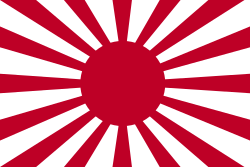Chinese forces
National Revolutionary Army

With Chiang Kai-shek as the highest commander, the NRA is recognized as the unified armed force of China during the war. Throughout its lifespan, it employed approximately 5,700,000 regulars, in 370 Standard Divisions (simplified Chinese:正式师; traditional Chinese:正式師), 46 New Divisions (simplified Chinese:新编师; traditional Chinese:新編師), 12 Cavalry Divisions (simplified Chinese:骑兵师; traditional Chinese:騎兵師), eight New Cavalry Divisions (simplified Chinese:新编骑兵师; traditional Chinese:新編騎兵師), 66 Temporary Divisions (simplified Chinese:暂编师; traditional Chinese:暫編師), and 13 Reserve Divisions (simplified Chinese:预备师; traditional Chinese:預備師), for a grand total of 515 divisions.
However, many divisions were formed from two or more other divisions, and many were not active at the same time. The number of active divisions, at the start of the war in 1937, was about 170 NRA divisions. The average NRA division had 4,000–5,000 troops. A Chinese army was roughly the equivalent to a Japanese division in terms of manpower but the Chinese forces largely lacked artillery, heavy weapons, and motorized transport.
The shortage of military hardware meant that three to four Chinese armies had the firepower of only one Japanese division. Because of these material constraints, available artillery and heavy weapons were usually assigned to specialist brigades rather than to the general division, which caused more problems as the Chinese command structure lacked precise coordination. The relative fighting strength of a Chinese division was even weaker when relative capacity in aspects of warfare, such as intelligence, logistics, communications, and medical services, are taken into account.
Although Chiang Kai-shek is recognized as the highest commander in name, his power on NRA was in the effect limited. This was due to the fact that the NRA was an alliance of powers such as warlords, regional militarists and communists. Before the alliance was formed under the pressure of Japanese invasion, these powers had their own land, struggled or allied with each other under their own interests and mutual conflicts were common. Because of this, NRA could be unofficially divided into 3 groups, Central Army, Regional Army and Communist forces.
Loyal to Chiang Kai-shek, the Central Army(simplified Chinese:中央军; traditional Chinese:中央軍) was best equipped. Most of the officers in the Central Army were trained by the Whampoa Military Academy, where Chiang Kai-shek served as the first president. Before the war, the Central Army mainly controlled east China.
The Regional Army (simplified Chinese:省军; traditional Chinese:省軍) consisted of various types of strengths from all the parts of China. Before the war, these strengths governed certain places and most of them admitted Chiang Kai-shek's leader position. However, they didn't really follow Chiang's command, nor received Chiang's assistance. They generally ran independently. The notable strengths under this category included Guangxi, Shanxi, Yunnan and Ma clique.
After the Xi'an Incident, Chiang stopped his offensive against the Chinese Red Army. Communists were then incorporated into the NRA to form the Eighth Route Army and the New Fourth Army, although their de facto commander was still Mao Zedong. Communists also led a large number of militias during the war. [1]
The NRA expanded from about 1.2 million in 1937 to 5.7 million in August 1945, organized in 300 divisions. [1] This included the incorporation of women's battalions and corps to the army, such as the Guangxi Women's Battalion. [2] [3] [4]

